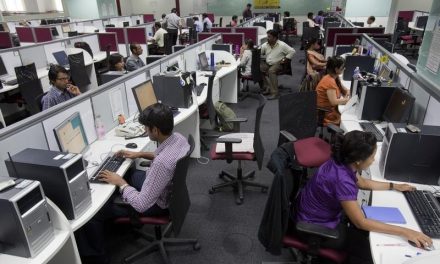In the face of coronavirus, organisations need to rapidly assess their current situation, implement change, adapt, and enable their workforce to work remotely if they’re going to make it through to the other side of this worldwide crisis. Servcorp shares tips on how to readjust organisations’ existing workforce management strategy to reduce the effect of sweeping crises on their business.
Fortunately, planning ahead is something global workspace providers, like Australian industry pioneer Servcorp, can help with, whatever the new normal looks like. Flexible, instantly scalable, plug and play serviced, coworking and virtual office solutions means organisations can not only have space, but also have team support and IT and telephony infrastructure up and running same day, on a month to month basis.
While the world awaits a vaccine, there is every chance the coronavirus outbreak may occur wherever people congregate. Readjusting strategic workforce planning to focus on potential future scenarios and steps towards recovery is crucial to navigating business’ new normal.
Here is Servcorp’s guide to updating and executing organisations’ workforce plan in the time of Covid-19:
1. RETHINK AND REBOOT. Use recent lockdown and work from home changes as a chance to reflect on what you have learnt and how your organisation will react to change in the future. What has evolved in the way your people work, and how can you help them do better? How can you realign your HR and executive teams to focus on the most pressing business priorities now? Can you reconfigure your workforce and workplace to match evolving business needs? Deloitte has put together a useful workbook to help.
2. FOCUS ON SAFETY. Commit to workforce safety by refocusing on their physical, mental and financial wellbeing. Questions to ask include:
How can you reconfigure the workplace to adapt to the new imperatives on hygiene, social distancing, and ensuring unwell employees stay home?
What new technologies can you employ to further this end (e.g. no-touch doors, hand sanitizer, remote logins, desk shields)?
How can you foster collaboration amongst remote teams?
What can you do to make remote working more inclusive and productive?
3. FUNCTIONAL FLEXIBILITY. With work from home arrangements now looking like the new norm for the foreseeable future, many organisations have had to undertake a crash course in managing their teams remotely, but thankfully it is not all bad news. Work from home arrangements can represent significant savings in office rents – the key is to make sure your people can access the tools they need to get their jobs done well. Coworking spaces can deliver flexibility and access to essential tools when required, without the hefty overhead costs.
4. LEAD THE WAY IN WHAT YOU SAY. Organisational cultures suffer as social distancing and remote working disrupt traditional efforts to align teams. Clear, empathetic, supportive and timely communication is imperative to stemming the disconnect. What strategies do you have in place to communicate with your people regularly? How can you foster connection and collaboration between physically distant workers? What policies and procedures guide respectful online interactions? Keeping your people on point is crucial for a triumphant return to the workplace.
5. FIND THE GAPS. It’s the perfect time to identify any gaps in your workforce and fully understand the vital skills your business will need in the future to survive. What might happen if specific roles in your organisation were suddenly impaired by illness? What contingencies do you have in place to ensure critical operations continue to run smoothly? Could a job mentoring program share key skills across multiple employees?
6. TRAIN FOR THE FUTURE OF WORK. This report from McKinsey argues that adapting your workforce strategy to post-pandemic ways of working is “crucial to building operating-model resilience.” The pandemic has fast-tracked digital transformation, but it’s more than just remote working or automation – staying resilient during and post-COVID means reskilling or upskilling your people to maximise productivity and deliver new, more agile business models.
If there is one lesson that 2020 is teaching us, it is to expect the unexpected. Do not hesitate. Act immediately to draft a workforce plan that encompasses as many potentialities about what comes next as possible. Doing so is key to future-proofing your business and keeping your people safe to do their best work yet.
-PR NEWSWIRE











